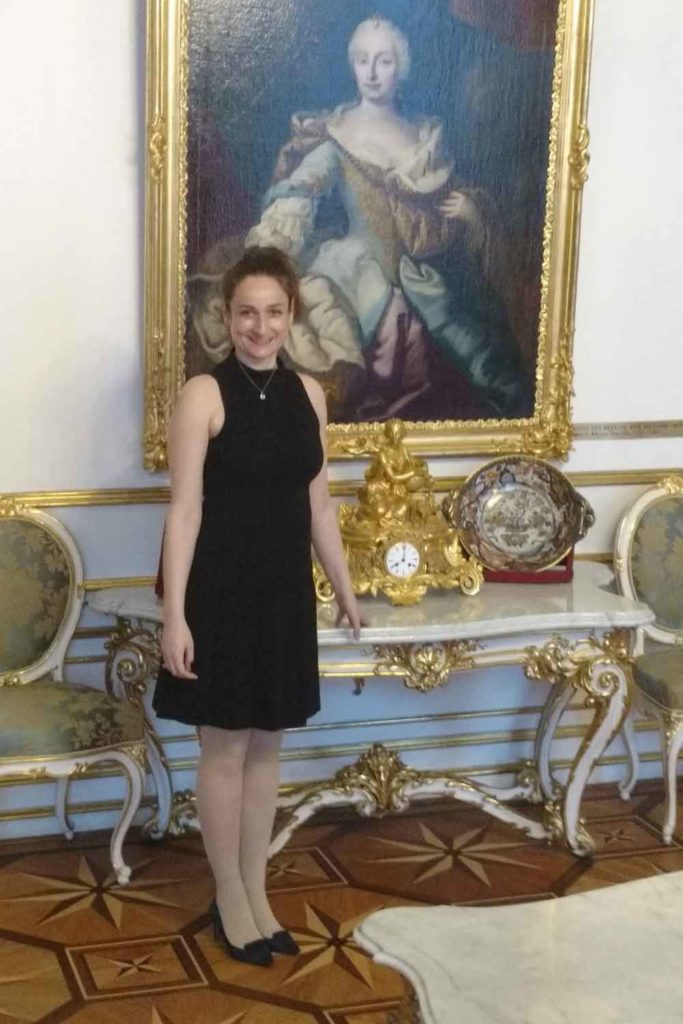
Roya Ghafele believes the industry should think more creatively about intellectual property.
By George Gay
Having spoken with Roya Ghafele, I cannot imagine her giving a PowerPoint presentation, though I could imagine her giving two or three separate presentations simultaneously on the same subject with each delivering different, cogent arguments and plausible conclusions. This is not to say she is uncommitted. When it comes to the big picture, she is almost unbending. She believes in the efficacy of, among other things, capitalism, markets and private property, including intellectual property (IP), on all of which she is fully qualified to comment. But, encouragingly to my way of thinking, she is not afraid of embracing contradictions. She clearly understands that the devil is in the details and that people and companies have to make choices when considering questions about, for example, IP management strategies.
The good news is that Ghafele has an encouraging message for the tobacco industry. Because the industry, at least the product manufacturing sector of the industry, is relatively new to patents, it has, she says, an opportunity, indeed, a responsibility, to use them to advantage—to the advantage of the companies involved and the public at large. But there’s a snag. Ghafele believes that realizing this opportunity and fulfilling this responsibility won’t be easy. It will involve avoiding pitfalls set by some deeply ingrained but unhelpful thinking around patents—thinking that could slow the industry’s transition at a time when progress toward less risky products, the main subject of patents within the tobacco and nicotine manufacturing sector, needs to be fast.
Ghafele’s academic and professional credentials are too numerous to list here but suffice to say her doctorate was awarded the Theodor Koerner Research Prize by the president of Austria, and she previously worked for both the Organization for Economic Co-operation and Development and the U.N.’s World Intellectual Property Organization. She is the founder and managing director of the law and economics consultancy OxFirst, which has won a number of prestigious awards for its work on IP.

Roya Ghafele believes the nicotine industry should move away from the current disputative approach to patents and toward a collaborative approach, citing the example of Austria’s Empress Maria Theresa. Instead of indulging in the sorts of wars beloved of most people obsessed with empire building, Maria Theresa in the 18th century created strategic marriages for her children, thus ensuring the prosperity and expansion of Austria within a relatively peaceable Europe.
One of the first points Ghafele made during a telephone chat in April was that, particularly in the tobacco industry, there needed to be a change in how those involved in such matters thought about IP. Not that current thinking was necessarily wrong, it was just that it wasn’t out of the box. She wants people to be creative about their IP and innovative in the way they think about patents. But what they had largely done so far, she said, was to follow the precise wording of the IP and patent rules set in stone since time immemorial. Companies had hired top law firms, and, given that litigating over patents was a lucrative business for lawyers, the result had been inevitable.
This was not the place the industry needed to be, according to Ghafele. Tobacco companies currently sold toxic combustible cigarettes, a business model without a future, so the only chance these companies had to survive largely in their present form rested on changing the business model by using innovation to produce better, less risky products and innovation required, or at least was greatly assisted by, the creative use of patents. Litigation over patents would merely slow the transition to better products, which was not in the best interests of either the companies concerned or consumers.
It is important to note, though, that this is not some pipe dream where companies turn into charitable trusts and markets turn into love-ins. Patents could be used as building blocks and instruments of change in order to grow businesses and make them better, Ghafele said. They could be used constructively to gain market share and trust and to fulfil the public health responsibilities companies have by providing as many consumers as possible with technologically better, less risky products and in the fastest time possible.
If some of this sounds lacking in specifics, it’s not surprising, I think. The opportunities on offer are wide ranging, and they could be applied only in accordance with a number of variables that would apply uniquely to the business model of the company concerned, the products in question, the potential for technological development of those products, the company’s consumer profile and the public interest, to name just a few.
But one problem with much of the above is that it seems difficult to understand how a company could use patents without at times litigating against those who infringe them, and Ghafele is well aware of this, admitting that what she was advocating sounded like the peaceful use of weapons—a contradiction. It was true that patents provided exclusivity in the market and a 20-year monopoly, but there were other ways of looking at things, especially if the field were opened up to the thinking of people from outside the usual IP establishment, even people with crazy ideas.
Ghafele, an Austrian, made the point that she thought we needed to move away from the current disputative approach to patents and toward a collaborative approach. And she gave as an example of what she meant the case of Empress Maria Theresa of Austria, who, in the 18th century, instead of indulging in the sorts of wars beloved of most people obsessed with empire building, created strategic marriages for her children, thus ensuring the prosperity and expansion of Austria within a relatively peaceable Europe.
At a fundamental level, Ghafele is concerned about the way businesses approach the whole process of patent management. To her way of thinking, business cases need to be aggressively thought out before new technologies and patents are devised and sought, whereas, too often, patents are created before it is figured out whether the underlying technology would ever be needed by the company. This could be done way better by, from day one, expending energy on examining the business proposition. How is this technology and how are these patents going to help us gain market share; how are they going to help us expand into new markets; how are they going to help us gain more friends …?
You can see this idea coming through in her wider thinking about IP, a term she prefers to intellectual property rights because the former puts the business center-stage while the latter tends to put the spotlight on the law. Ghafele sees IP and patents not mainly as rights but as assets, as presenting an “amazing economic opportunity” because private property, including knowledge, could be handled in many different ways. It could be used in trade, she said; it could be taken to another country; it could be used to better communicate a company’s value and thereby to attract investors; it could be used to communicate a public health interest and how it is doing good; it could even be used as a donation. To use such assets only as rights and to litigate was to undervalue them massively.
Although Ghafele is committed to considering new ways of looking at patents, she is not in the business of doubting whether patents should have a place within a free market. Concepts around private property were essentially down to political choices, she said, and it was her take that having in place private property rights was a way of structuring markets. She made the point that research had shown that, in the absence of private property rights, markets, in developing countries for instance, didn’t work. And she added that she tended to the opinion that, historically, positive economic growth rates had shown a direct relationship with the presence of property rights, something that held for IP rights. This was the area of Ghafele’s ideas that I found the least convincing, partly because I fail to see how research into the economic benefits of the patents system could produce valid outcomes, and I did manage to extract something of a concession here. “On the other hand, does an economy have to grow?” she mused out loud. “Would we all not be more happy and less stressed out without chasing growth rates all the time?”
But this was a short interruption to her flow, and she went on to say that innovation drove growth, so it was important to examine the whole spectrum of how to innovate, which included the management of patents but went beyond patents into areas such as open access innovation, a subject too vast to look at here. But again, she doubled back by saying that while growth was important, it had to comprise equitable economic growth. And that was why public interest considerations had to be built into patents management. There was nothing inherently good or bad in patents. It was how people managed patents that counted. And, inevitably, there was a lot of debate currently about where the consumer stood in all of this.
Finally, Ghafele said it should be remembered above all that IP was an asset, an economic opportunity, and it needed to be traded in a way that this economic opportunity could help people. Behind all the jargon, the message, to the tobacco industry at least, was very simple: If you have property rights over your technology, you should use them in a responsible way—to save lives.


